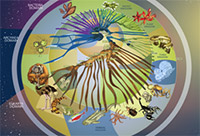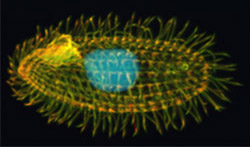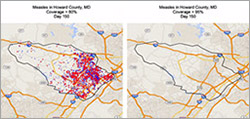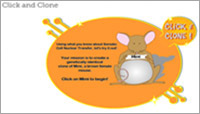As school starts up again, we look forward to a year that further enhances health and science literacy and brings students closer to pursuing science as an exciting future career. The National Institutes of Health continues to help both educators and students toward these goals through its Science Education Partnership Award (SEPA) Program ![]() .
.
What Is SEPA?
SEPA funds innovative science, technology, engineering, and mathematics (STEM), and informal science education (ISE) projects for students in pre-kindergarten through grade 12 (P-12), as well as public outreach activities such as science museum exhibits. Its goal is to invest in educational activities, including interactive online resources, that improve the training of a future workforce to meet the country’s biomedical research needs. SEPA encourages partnerships between biomedical researchers and P-12 teachers, schools, and other interested groups. SEPA provides:
- Opportunities for students from underserved communities to learn about careers in basic or clinical research.
- Professional development, skills, and knowledge building for science teachers.
- Support for science centers and museum exhibits on health and medicine to improve community health literacy.
In March 2017, SEPA found its new home with the National Institute of General Medical Sciences (NIGMS). Congress mandated the move so that SEPA could more efficiently integrate with our other institution-building and research training programs and increase collaboration opportunities between them.
SEPA-Funded Resources
The following are just some of the various SEPA-funded resources that educators can use to engage their students in science:

The Partnership in Education: movies, games, and curricula ![]() (elementary and middle school)
(elementary and middle school)
The Partnership in Education at Duquesne University specializes in using cutting-edge technologies and creative media platforms—including videos, apps, posters, and lesson plans—to bring science to life and inspire lifelong learning. Topics include development ![]() , evolution
, evolution ![]() , the science of sleep, and regenerative medicine
, the science of sleep, and regenerative medicine ![]() .
.

ASSET: lab modules ![]() (kindergarten through high school)
(kindergarten through high school)
Advancing Secondary Science Education Thru Tetrahymena (ASSET) ![]() at Cornell University provides education materials that stimulate hands-on, inquiry-based learning of biological concepts. Each lab module features living Tetrahymena, a single-celled protozoan that’s safe and easy to grow and work with. Students cultivate samples of this organism in lab exercises to learn about topics such as chemotaxis, organelle growth and regeneration, and mutation. You can view descriptions of available lab modules
at Cornell University provides education materials that stimulate hands-on, inquiry-based learning of biological concepts. Each lab module features living Tetrahymena, a single-celled protozoan that’s safe and easy to grow and work with. Students cultivate samples of this organism in lab exercises to learn about topics such as chemotaxis, organelle growth and regeneration, and mutation. You can view descriptions of available lab modules ![]() along with links for downloading teacher guides and student activity sheets on the ASSET website.
along with links for downloading teacher guides and student activity sheets on the ASSET website.

Biology of Human: curricula, activities, comics, and games ![]() (middle school; adults including parents, educators, and librarians)
(middle school; adults including parents, educators, and librarians)
Biology of Human from the University of Nebraska, Lincoln, helps the public—particularly young people—better understand advances in biomedical research relating to human biology. Resources include simulations of possible measles outbreaks ![]() in selected U.S. cities following a single measles case, and detailed images and diagrams of various viruses
in selected U.S. cities following a single measles case, and detailed images and diagrams of various viruses ![]() and ways they cause infection.
and ways they cause infection.

Let’s Get Healthy!: lesson plans and activities (K-12, with focus on middle school)
Oregon Health & Science University provides teachers and students with online access to community-specific research data generated from the Let’s Get Healthy! education and research exhibit. These teaching resources explore different aspects of healthy choices, chronic diseases, advocacy, epigenetics, research ethics, development, and more.

Genetic Science Learning Center: resources on cell biology ![]() (high school)
(high school)
The Learn Genetics website from the University of Utah’s Genetic Science Learning Center provides teachers with detailed descriptions, videos, and interactive modules on cells ![]() , stem cells
, stem cells ![]() , and cloning
, and cloning ![]() to teach students about cell biology.
to teach students about cell biology.
Other SEPA-Funded Projects
For more SEPA projects see the Educational Resource options listed on the SEPA website ![]() .
.


informative
This is great.